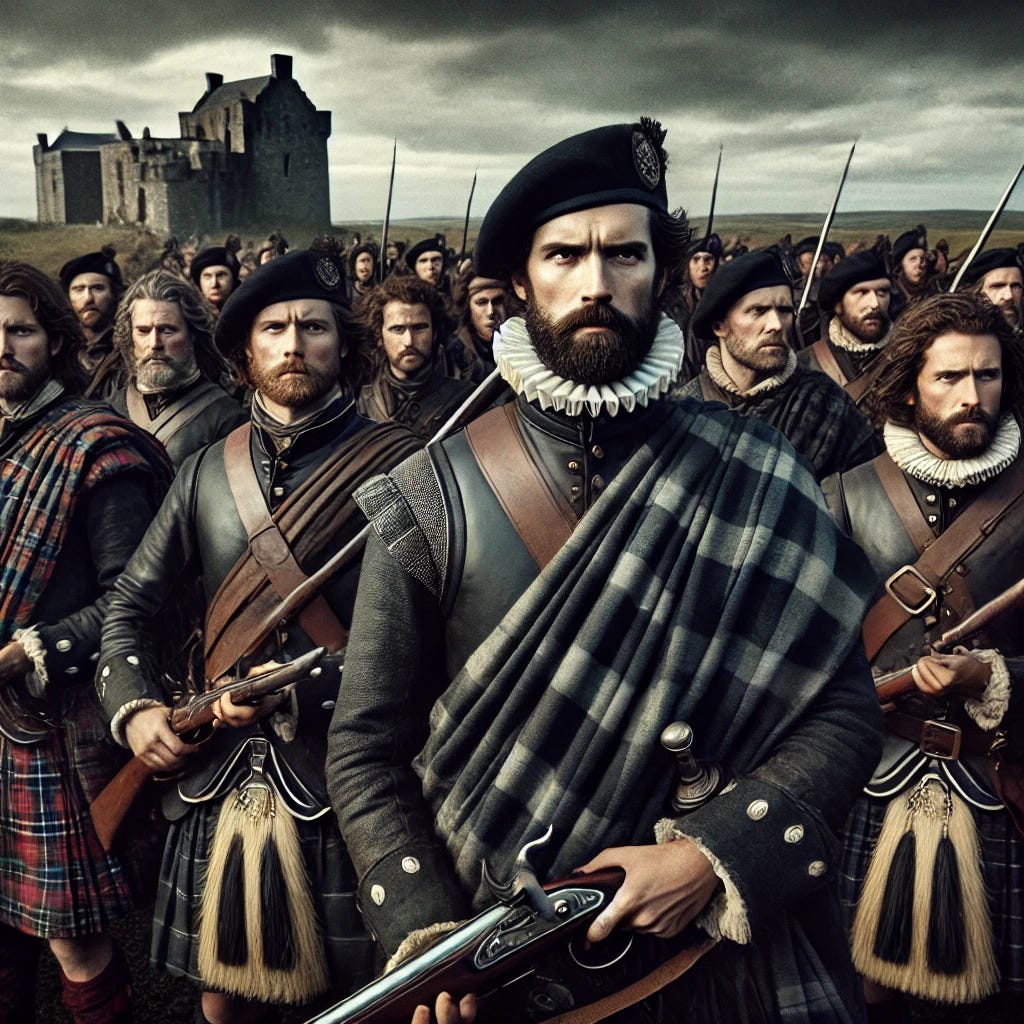In April 1644, amidst the bloody turmoil of the Wars of the Three Kingdoms, a group of Scottish Royalists under the Marquis of Huntly rode into battle wearing black taffeta around their necks—a striking and ominous symbol. According to contemporary chronicler John Spalding, this distinctive accessory was meant to signal their willingness to fight to the death. However, history tells us that their actions did not entirely align with their dramatic statement.
What was the Black Taffeta Oath? Did it truly represent a commitment to die for the King, or was it simply a bold statement meant to intimidate their opponents? This article explores the meaning behind this eerie emblem, the psychology of battlefield symbolism, and the reality of Huntly’s forces in 1644.
The Symbolism of Black Taffeta: Death, Loyalty, or Theater?
In the 17th century, symbols carried immense weight in warfare. Armies often used banners, badges, and specific clothing to signify allegiance, inspire fear, or convey ideological commitment. The choice of black taffeta, a luxurious yet somber fabric, suggests a deliberate reference to mourning, martyrdom, or a fatalistic pledge to fight to the last man.
Some possible interpretations of the black taffeta include:
A Death Oath – The most straightforward reading is that Huntly’s men wore the black scarves as a suicide pact, pledging not to surrender under any circumstances. This aligns with medieval and early modern concepts of chivalric honor, where warriors vowed to die rather than face dishonor.
A Psychological Weapon – The Covenanters, Huntly’s opponents, may have perceived the black taffeta as a fearsome display of resolve. A group of soldiers signaling they were willing to die might shake the morale of the enemy.
A Royalist Badge of Identity – In an era when armies were a mix of mercenaries, nobles, and conscripts, uniforms were inconsistent. The black taffeta may have served as a simple means of identification among Huntly’s supporters.
A Gesture of Defiance – Given Huntly’s reputation for hesitation, it’s possible the taffeta was more symbolic than serious. Perhaps it was meant to signal determination in public, while the true intent was more flexible in practice.
Huntly’s Actions: Did They Live Up to the Oath?
Despite the ominous symbolism of the black taffeta, the actual events surrounding Huntly’s forces suggest a gap between appearance and reality. Instead of a glorious last stand, the Royalist campaign of 1644 was marked by indecision and retreat.
Failure to Confront the Covenanters – Huntly gathered 2,500 men at Inverurie, a sizable force, yet he avoided direct confrontation with the enemy. This reluctance undercut the idea that his men were truly prepared to die in battle.
Flight from Aberdeen – Instead of making a heroic stand, Huntly and his forces abandoned Aberdeen when faced with a strong Covenanter army, despite their earlier show of defiance.
The "Oath" Becomes a Historical Irony – Spalding’s account, while dramatic, is tinged with irony. He writes that although the men wore their black taffeta as a sign of their willingness to die, "it provit otherwayes"—a subtle way of saying their actions did not match their bold claim.
This raises an important question: was the Black Taffeta Oath ever truly meant to be honored? Or was it a case of war-time theatrics, a kind of psychological bluff intended more for show than for actual battlefield commitment?
Conclusion: A Symbol of Honor or a Hollow Gesture?
The Black Taffeta Oath remains one of the more enigmatic symbols of the Scottish Civil War. Whether it was a sincere pledge of loyalty unto death or simply a dramatic display of defiance, it reflects the chaotic and performative nature of 17th-century warfare.
Ultimately, Huntly’s men did not live up to the grim declaration implied by their scarves, making the Black Taffeta Oath a fascinating case of military symbolism clashing with real-world pragmatism. Their choice of attire was a powerful statement—but not a prophecy.





